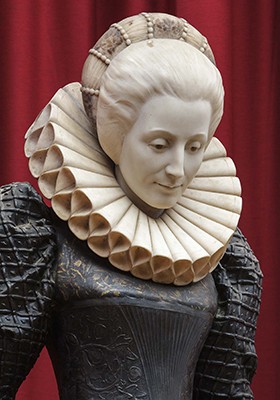 I was recently at the Yale Center for British Art, where Sculpture Victorious: Art in the Age of Invention, 1837-1901, is on view through Nov. 30. It’s a fascinating exhibition in many respects, bringing together a very diverse assemblage of objects from a very diverse group of lenders.
I was recently at the Yale Center for British Art, where Sculpture Victorious: Art in the Age of Invention, 1837-1901, is on view through Nov. 30. It’s a fascinating exhibition in many respects, bringing together a very diverse assemblage of objects from a very diverse group of lenders.
Looking at one piece, an idealized, imaginary portrait of the first earl of Winchester borrowed from the House of Lords, Michael Hatt, an art history professor at the University of Warwick who is one of three curators of the show, said to me: “It is a mix of history and fantasy, as almost everything in this exhibition is.â€
In fact, a few sculptures–defined for this show quite broadly (to include medals and coins, for example) are so quirky they could almost be called follies. (See, for example, “A Royal Game,” an imaginary game of chess between Elizabeth I and Phillip II of Spain, by William Reynolds-Stephens from the collection of Tate Britain.)
But the point of this exhibit, as I write in a review published in today’s Wall Street Journal, was that these artworks served the British empire:
Co-organized by Tate Britain, “Sculpture Victorious” demonstrates how the British used sculpture—as public monuments, in public institutions, at exhibitions like those in the Crystal Palace at Sydenham, and in coins, medals and other popular reproductions—to proclaim their political power and industrial prowess.
And so Sculpture Victorious is less about art and more about history, invention and craft.
That does not mean, however, that some of these pieces aren’t fascinating to look at. In fact, the exhibition serves as a reminder that exhibitions can, and often do, have more than one function.
That’s Dame Alice Owen (detail), 1897, by George Frampton, above.
Photo Credit: Courtesy, YCBA
